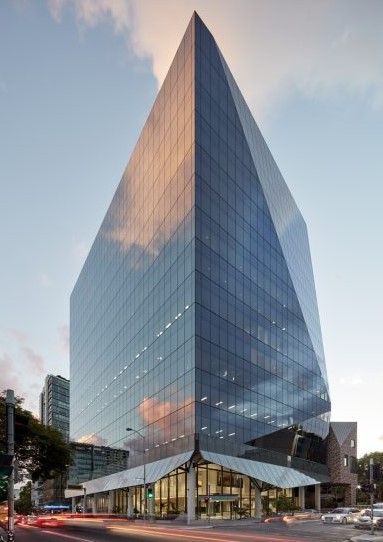Expert perspective on Property Capital Markets: David Green-Morgan
 David Green-Morgan, Managing Director Asia Pacific for Real Capital Analytics, recently joined PFA for an informative webinar on Property Capital Markets Through a Global and Local lens.
David Green-Morgan, Managing Director Asia Pacific for Real Capital Analytics, recently joined PFA for an informative webinar on Property Capital Markets Through a Global and Local lens.
He said that while the world was on a rollercoaster for the last 18 months, recovery is underway. “We are seeing a strong bounce-back around the world, and the bounce-back in Australia has been as strong as in other markets. The percentages are impressive but we shouldn’t forget how big some of the declines were last year.”
Some macro changes RCA is seeing globally include yield compression in multifamily property investments (build-to-rent) as weight of money drives pricing, and the industrial and logistics sector taking off.
“The sums of money we’re seeing into industrial and logistics are quite extraordinary and is something we’re likely to see for many years to come provided the stock of investible grade assets remains high.
“With apartments and industrial growing exponentially, something has to give. And the office sector is being squeezed. Since 2007, office has accounted for approximately half of all investor allocations into the global commercial real estate investment market. Of course, many investors retain significant investments in office portfolios even though we’re not necessarily seeing further increases in allocations.”
Mr Green-Morgan shared some RCA perspectives on several aspects of the property market:
Sector volumes: “Office is still running ahead of last year. Retail really picked up this year in Australia, which is something we’re not really seeing in other markets, particularly in Europe and the US.
Industrial has exploded, and we’re going to need a good supply of quality stock to keep it going.”
Industrial and logistics capital: “The allocations to industrial, logistics and data centres seems to be part of a structural shift, as more capital is being raised for these sectors. There needs to be a consistent supply of opportunities for investors, which could be the one limiting factor in the short-term, but we are seeing lots of industrial and logistics stock being developed.
“What usually brings property prices to a halt is a dramatic increase in supply. Given the scale of construction we’re seeing around the world, that would usually be the natural adjustment mechanism in the cycle. But the weight of capital we are witnessing is still enormous – interest rates are still low, finding yields in fixed income remains challenging. And the dynamics are being driven by the big macro trends in e-commerce.”
Office performance: “We’re still not sure about the impact of COVID on the office market, and rental growth into 2022 is the big question. The capital going into non-CBD offices has been very strong, with suburban offices growing faster. This reversed a trend post-GFC where suburban offices slowed. It will be different city-to-city.
“A factor could be the post-pandemic working environment that we’re adopting. When working out how much space you need, factoring in differing individual views and needs will be a challenge.
“Even pre-pandemic there was a demand for shorter leases. There was already that demand, and how that plays into lease structures and incentives is interesting – obviously the shorter the lease the more limited the incentives. How that may evolve may be the big issue for 2022.”
The retail sector: “We’re seeing more activity in retail in Australia than in many other parts of the world currently. There has been a shift of capital back into retail locations, including regional retail.”
Australia overview: “Australian volumes are up 70% year-on-year. But Australia, along with Singapore, was slightly more affected during 2020. Australia is currently ahead of the five year average, which shows the pent-up demand from lifting restrictions, and from offshore capital during this period. Australia is likely to finish off with a very strong end to the year.
“We’ve seen the rise in international investment into Australia, and can’t see Australia going back to 10 years ago, particularly with Sydney and Melbourne likely to stay on a par with other major investment markets around the world. Australia is seen as a transparent market, and a liquid market, which is an important consideration.
“We’re seeing increases in Singapore and Hong Kong capital coming in to Australia – not just industrial, we’re also seeing some investment in office and retail as well. There is still lots of capital flowing from Europe and North America into Australia.”
The rise of alternative real estate: “The rise of the alternative commercial property asset has been impressive and surprising. Both the growth and the breadth of sectors which institutional investors have been prepared to look at has been impressive – childcare, hospitals, medical offices, student housing, pubs, service stations, are all attracting strong volumes. The tech/data centre sub-sector is only being held back by lack of quality stock at the moment.
“Build-to-rent is another: In APAC most of this capital ends up in Japan, which has a more mature build-to-rent market. But Australia has all the hallmarks of a destination which could have a very successful and large built-to-rent sector.”
Environmental considerations: “Environmental regulations are obviously going to be tightened, and timeframes reduced. Luckily for Australia, it has been at the forefront of adopting and implementing and enhancing environmental standards within office buildings in particular for many years, and this could give Australia an advantage in attracting capital.
“The environmental debate will play a part in how capital is attracted in the longer term, which will play into rental growth, and how companies will look at your building in years to come. At the moment Australia stands in a very good position as many of these standards are already ingrained in the decision making process.”
Please view the recent webinar recording here
Image - Charter Hall
